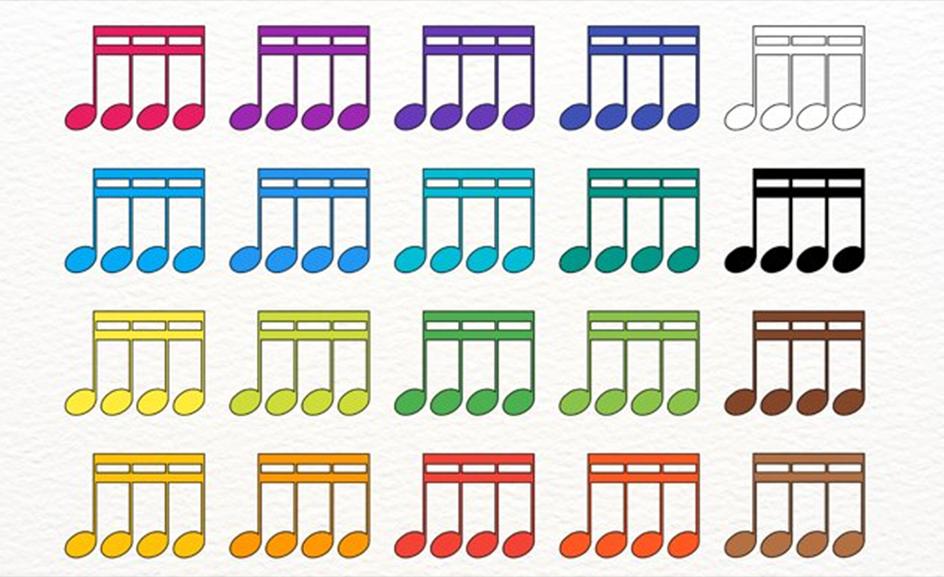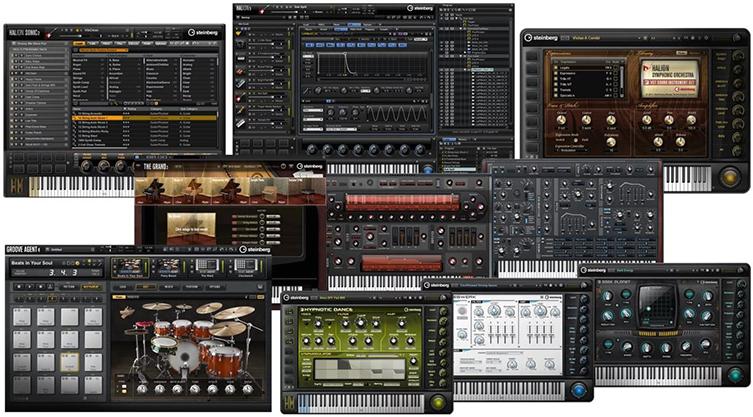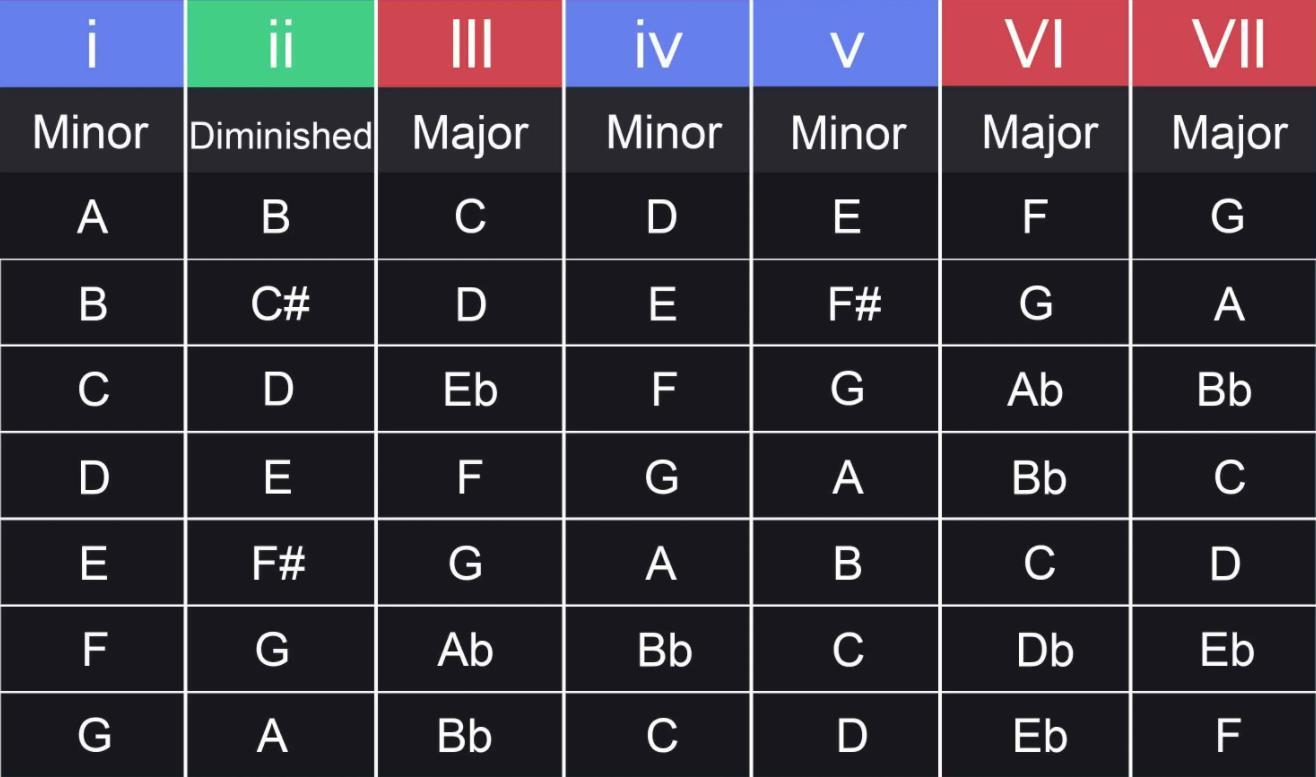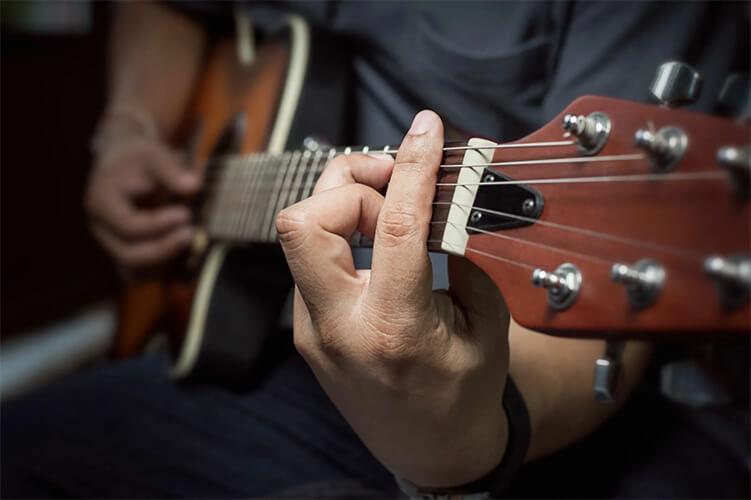How to learn to play the guitar

Is there a quick and easy way about how to learn to play guitar? Unfortunately, no. Achieving proficiency requires a combination of persistence, dedication, effort, and resolve. However, once you start, the enchanting spell of guitar music will enrapture you, drawing you in so completely that you’ll hardly notice yourself mastering new solos. If you’re uncertain about how to begin, this article will outline the primary aspects of learning. And if you’re intrigued, consider joining a community of guitar enthusiasts.
Selecting a Guitar for Beginners
Initially, it’s important to determine which type of guitar you want to learn. This decision influences various elements of your technique, posture, hand positioning, as well as your selection of instrument. So, which type of guitar appeals to you the most?
- Classical;
- Acoustic (electroacoustic);
- Semi-acoustic;
- Electrical.
Classical and acoustic guitars share a similar “Spanish” shape. However, electric instrument come in a vast array of designs. The most popular electric models include the Fender Stratocaster, Fender Telecaster, Gibson Les Paul, and Gibson SG, but there are numerous other excellent options as well.
For those who lloks how to learn to play guitar, low-budget options are typically the best choice. For example, Fender offers Squier electric model, which allow you to avoid regretting your investment if you later discover that music is not your passion. Beginner sets are also available, which come with an instrument, cord, amplifier, and case.
If you want to learn how to play an electric guitar, you will need an amplifier, cord, and picks. It’s also helpful to have headphones for practicing without disturbing others. When selecting a guitar, focus on its comfort and sound quality. Buyers often find themselves drawn to an instrument that feels like a perfect match, much like selecting a magic wand.
Learning to tune the guitar
Learning how to tune a guitar is an essential part of playing. The simplest approach is to use a tuner, which is available in the form of pins, boxes, pedals, and computer plug-ins. Numerous acoustic models come equipped with built-in tuners, and there are numerous apps and websites with online tuners, allowing you to tune your instrument using just your smartphone. Here is the standard tuning scale.
- E4 – the first (the thinnest) string;
- B3 – second;
- G3 – third;
- D3 – fourth;
- A2 – fifth;
- E2 – sixth (the thickest).
While there are numerous alternative tunings available, it’s best to experiment with them after gaining proficiency in standard tuning. You can adjust the tuning pegs to achieve the standard tuning without relying on a tuner. To start, press the second string on the fifth fret and pluck the first and second strings together. They should produce the same sound. If not, adjust the second tuning peg until they do. Next, press the third string on the fourth fret and pluck the second and third strings together. Then, repeat this process on the fourth, fifth, and sixth strings, pressing each on the fifth fret. Finally, pluck each pressed string with the previously tuned, open string.
Fifth fret tuning

Professional guitarists may use harmonics to tune their instruments, and some individuals may tune by ear using songs, chords, or intervals. However, if you’re a beginner, these techniques are likely not suitable for you at this stage. It’s still worth familiarizing yourself with them.
Additionally, there is another critical aspect to consider when dealing with electric guitars – the scale settings, pitch, and fretboard curvature. An open string and the same string pressed at the 12th fret should produce the same note, one octave apart. For instance, the first string should produce E4 and E5. If the tuning is inaccurate, you can use a screwdriver to tighten the saddle and ensure that the tuner needle is at the center position at both the zero fret and the 12th fret. Failure to do so will result in the guitar being correctly tuned at one point on the fretboard but not in another.
Saddles
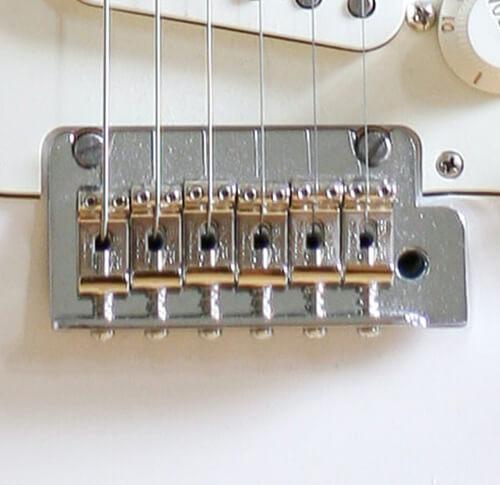
Learning to play the guitar can be difficult when the strings buzz against the fretboard and produce unwanted ringing. However, there are some solutions you can try, such as raising the saddles with a thin key or adjusting the anchor. For more complicated tasks such as scale setting and pitch adjustment, it’s best to leave them to a luthier. Additionally, if you’ve just installed a new set of strings, don’t be alarmed if your guitar goes out of tune in the first few days. This is normal, and after a short period of time, the strings will stretch and hold their tune better.
Hand position
The conventional position for playing the guitar requires the instrument to be rested on the left leg while the leg itself is placed on a stand. The left hand should form a rounded shape, with fingers perpendicular to the fretboard plane. However, this position is not always comfortable, and many guitarists position the deck on their right leg, which affects the position of the hand depending on the guitar part being played.
The key is to press the strings with the pads of the fingertips, close to the nails (which should be kept short). It is also essential to avoid excessive tension in the hand, although this may be difficult at first. Both the left and right hands should mute the strings that are not being played to prevent unwanted sounds. This may also be challenging initially, but it is important to develop good muting habits from the start.
The right hand should rest against the guitar deck near the bridge, with the elbow area in contact with the guitar. The hand should hang freely, and the pick should be held between the thumb and forefinger, or with the middle finger pressing against the index finger for a firmer grip. However, care should be taken not to apply excessive tension.
If you plan to perform with a band, it is essential to practice playing while standing, just as you will perform at a concert. Sitting and standing positions differ significantly in comfort, hand placement, and overall feeling. Therefore, you should become accustomed to playing with a guitar strap right away.
Learn guitar tricks
To become proficient in playing the guitar, you need to acquire a variety of skills and techniques. Below are some of these techniques that you should take note of and aim to master gradually.
- Legato is a musical technique in which a series of notes are played smoothly and connected without any interruption or pause between them;
- Staccato refers to a sharp, abrupt attack or articulation of a note;
- Hammer-on is a technique of playing legato where the initial note is played with a pick and the following note is produced by tapping the fret with a finger of the left hand, without plucking the string with the right hand;
- Pull-off is a technique where you sound a note by picking it and then pull your finger off the fretboard to make the string vibrate against the fret and sound the next note in the sequence without using your right hand. For example, if you’re holding down the string at the seventh fret with your ring finger and the fifth fret with your index finger, you can pull off your ring finger to play the note at the fifth fret;
- Variable stroke is the action of moving the pick in an upward and downward direction to produce different sounds on the guitar;
- Downstroke picking refers to the action of moving the pick downwards only;
- Tremolo refers to the rapid and repeated movement of the pick up and down;
- Vibrato is a technique where the player rapidly and repeatedly changes the pitch of a note by slightly varying the pressure of their left hand finger on the string, producing a small but rhythmic variation in the tone. It is a challenging technique to master and is considered an important skill for guitarists;
- A harmonic is a delicate sound produced by lightly touching certain points on the guitar fretboard without pressing down on the string with your left hand finger;
- Tapping is a technique of playing the instrument where the player taps on the frets using their fingers instead of using a pick;
- Arpeggio is a technique where the guitarist plucks the strings in a specific order to create a rhythmic and melodic pattern;
- Strumming refers to the act of striking or brushing multiple strings on the guitar simultaneously in a rhythmic pattern;
- A slide involves gliding your finger from one fret to another on a guitar;
- A bend is a technique where a guitarist pulls the string up with their finger to produce a higher-pitched note, similar in sound to a slide, but with a technique similar to vibrato;
- Palm muting is a technique that involves using the right hand’s palm to mute the strings while playing.
During your training, you will be able to learn many more interesting techniques. However, before that, it is essential to understand the notes. To start, you should learn the pentatonic, chromatic, minor, and major scales on the guitar, followed by other scales like Phrygian, Dorian, and more. But most beginners start with chords as it is the easiest way to get started.
Learning сhords
Guitar chords can be classified into two types: open and barre. Open chords are played on the first three frets of the guitar, where certain strings are left open to produce sound. For instance, in Am chord, the second, third, and fourth strings are pressed while the first, fifth, and sixth strings remain open. On the other hand, barre chords require pressing all six strings with the index finger while holding a chord with the middle, ring, and little fingers.
To learn how to play guitar chords was easier, beginner guitarists often use chord diagrams. These diagrams provide the chord charts for A minor and C major keys, indicating the positions where the fingers need to press on the frets. The dots on the diagrams represent the pressing points, while the top line indicates the thinnest string and the bottom line indicates the thickest. Other keys may require more barre chords. Once you have mastered the basic chords, you can proceed to learn more complex harmonies such as seventh chords.
Am
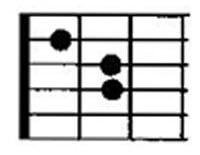
C

Dm

E
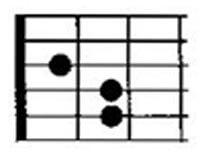
F
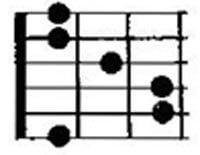
G

There are four primary forms of barre chords: F, Fm, B, and Bm. By shifting these shapes along the fretboard, we can create various chords while using the same finger positions. Therefore, learning to play guitar chords is not as difficult as it may seem. The key is to practice finger placement and allow your hands to adapt to the new movements. During the initial months of playing, you may experience some discomfort and pain in your hands, but this is a normal part of the learning process. As you progress, it will become easier and more natural.
F

Fm

B

Bm

Tablature is another way of indicating guitar chords. Here is an example of the same chords represented in tab form. Each line corresponds to a string (the top line is the thinnest), and the numbers indicate which frets to hold down. Using tabs, you can also learn how to play various parts such as solos, fills, and interval combinations.
Am, F, C, G in tablature

Song reviews
Finding chords for specific songs on the Internet is a common practice. However, it is more beneficial to learn how to pick out chords by ear. By listening to the song and experimenting with different variations, you can find the chords that best fit the music. You can also apply this technique to learn solos, plunks, guitar fills, and even parts of other instruments.
For novice guitar players, learning to play complex phrases can be challenging. The trick is to practice them slowly and repeatedly, gradually increasing the speed. Using the slow-motion feature on your player can also be helpful. It is important to not only identify the chord progression, but also to master the rhythm accurately and hit the beat.
Rhythmic patterns
Famous songs often feature unique string strikes that create rhythms that perfectly complement the drums, vocals, and other parts of the music. However, when you learn to play the guitar, beginners usually start with simpler rhythmic patterns using a pick. These patterns involve a combination of upward and downward movements. Here are a few examples.
The ska rhythm is characterized by pauses on every strong beat and upbeats on every weak beat

Reggae rhythm involves rapid up and down strikes on every second beat

At the start, there are two forceful strikes, followed by a back-and-forth motion at the end

A rhythm with pronounced accents, similar to tango

Learning how to play arpeggio
Playing chords can be done in various ways and not limited to just strumming technique. An alternative technique is arpeggio where you hold a chord and pluck the strings individually in a repeated pattern. Beginners should start by learning simple arpeggios on the guitar, such as holding down the Am chord and plucking the strings in a specific sequence.
- 5-4-3-2-3-4;
- 4-3-2-3-1-3-2-3;
- 4-2-3-1-2-3;
- 4-3-2-4-3-2-4-3-2-4-3-2.
Once you become proficient in playing basic arpeggios and comprehend their underlying principles, you can devise your own patterns, modify chords, insert solos, incorporate strikes, and enhance your playing with various embellishments.
Learning how to play riffs
Playing the guitar doesn’t always require chords; solos and parts can be created using riffs. Riffs are short melodic patterns that are repeated in a section of a song, usually a verse, and often have a clear rhythmic basis that adds energy to the song. Heavy styles of music, such as rock and different types of metal, often rely on powerful guitar riffs played in fifths, fourths, or power chords, which usually consist of both a fifth and a fourth. The other strings are muted when playing riffs, and it’s important to play them with overdrive or distortion effects. While practicing fifths and fourths is essential, thirds, octaves, and even single notes can be incorporated into riffs to create an assertive sound. Some musicians even use dissonant intervals, such as tritones, in their riffs to create aggressive sounds.
Quint

Quart

Power Chord

Octave

Tritone

Typically, riffs are performed on the lower and middle range of the guitar, specifically on the thicker strings. This is where the riff gains more weight and depth. However, it’s important to ensure that the guitar part doesn’t clash with the bass guitar. In most cases, the bass part replicates the guitar in riffs, which results in a harmonious blend and a more impactful sound.
Exercises
A great way to self-learn guitar at home is to practice popular songs by deconstructing and focusing on chords, arpeggios, riffs, and solos. This method enables you to enjoy your favorite music while analyzing its structure and refining your technique. During this process, it’s essential to pay attention to nuances like vibrato, slides, bends, and other effects that contribute to the sound.
Another important aspect of guitar training is mastering scales. Familiarizing yourself with the minor, major, blues, and pentatonic scales, along with the skill of playing chords, enables you to improvise easily in any key and integrate additional tones from other scales.
The third type of training is based on exercises without a melodic foundation. The objective here is not to learn how to play a particular piece but to enhance finger coordination, stretching, and playing speed. A good example of such an exercise is playing the sequence 1-2-3-4 on different frets with your index, middle, ring, and little fingers. You can start on the sixth string, then move on to the fifth, and continue in reverse order. You can also modify the sequence to make it more challenging.
- 1-4-3-2;
- 1-3-2-4;
- 1-4-2-3;
- 4-3-2-1.
Try practicing different techniques and tricks to improve your guitar playing skills. For example, try hammer-ons and pull-offs, starting with the index finger and working your way to the ring finger or middle finger. You can also work on tremolo by increasing the tempo of your picking. It’s important to practice these techniques methodically and rhythmically at a slow pace. Another exercise to consider is stretching (1-3-5). Play through different patterns and run them across all strings and the entire fretboard to develop coordination. Initially, this exercise may feel overwhelming, but with time and practice, you’ll be able to play any melody with ease.
How to learn guitar for beginners?
Use the metronome. Developing a strong sense of rhythm is crucial when learning to play the guitar. It will help you to play evenly, improve your exercises, and play smoothly without relying on a metronome. This skill will also make it easier for you to interact with other musicians in a band and produce recordings that require minimal editing.
Slow pace. Interestingly, playing beats at a slow tempo is often more challenging than at a fast tempo. When playing at a fast pace, the intervals between beats are shorter, which means you have to move your hands quickly, but small errors may go unnoticed. If you train yourself to play beats with a wider interval, you’ll be better equipped to play accurately at a faster pace with shorter intervals between beats.
Every day. Consistent practice is crucial to maintaining and improving your skills. It’s more effective to practice for 15 minutes every day than to practice for two hours once a week. In the performing arts, as in sports, it’s important to keep your muscles and mind in good shape. Regular practice will also help you learn to play the guitar more quickly.
Concentration. All you need is to dedicate one hour a day for guitar practice. Choose a time when you won’t be interrupted or distracted, and fully focus on your training, paying close attention to your technique. If necessary, record yourself playing to identify and correct any mistakes.
Enjoy it. However, it is important not to become overly zealous in your practice. If you begin to feel that the exercises are becoming tedious, switch to something else. The most engaging aspect of learning to play the guitar is studying and mastering popular songs. If you prefer scales, then focus on playing scales. But it’s important not to push yourself too hard, or else you may lose your interest in music entirely.
We wish you the best of luck in your guitar learning journey! It is advisable to seek out a teacher, especially during your initial stages, who can help you with tuning your equipment. However, if you decide to learn guitar independently, it’s still feasible. Don’t wait for the perfect moment, begin your learning journey now. Practice guitar regularly, but ensure it’s for your own enjoyment. As you advance in your skills, consider playing with a group or a band as it provides a distinct experience and feeling.



